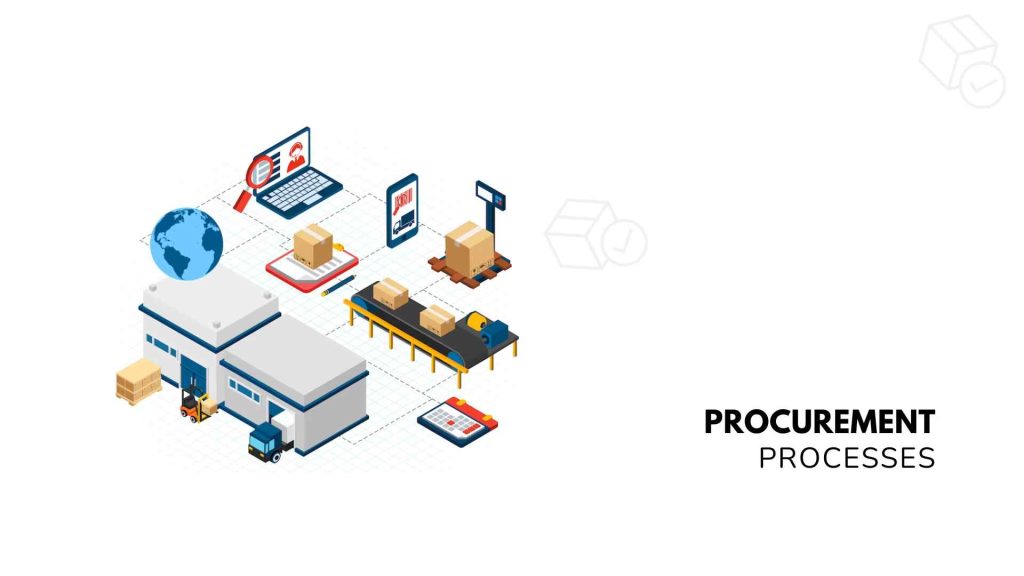Procurement stands as a foundational pillar driving the success and sustainability of organizations. It encompasses the intricate process of acquiring goods and services essential for a company’s operations, making it a critical function influencing quality, efficiency, and business performance. Procurement extends beyond mere purchasing; it involves strategic decision-making, supplier relationships, risk management, and compliance adherence.
At present, global supply chains, dynamic market conditions, and evolving consumer demands, the significance of procurement in achieving organizational goals has never been more pronounced. It is within this realm that the integration of cutting-edge technologies and the evolution of methodologies, particularly through ERP systems, has redefined the landscape of procurement, offering strategic advantages that drive value far beyond the traditional transactional aspects.
In present business, procurement processes are pivotal in driving organizational success. The integration of Cloud ERP systems has significantly transformed the landscape of procurement by offering strategic advantages that go beyond mere transactional functionalities. These systems have evolved to deliver a spectrum of benefits, reshaping the procurement landscape and contributing to business growth and agility.
Let’s see strategic values to procurement processes across 7 key areas.
Centralized Procurement Management
Centralized Procurement Management is the strategic approach of consolidating and overseeing all procurement-related activities within an organization from a single, unified platform or department. This method centralizes the control and coordination of purchasing processes, supplier relationships, and procurement strategies. By consolidating these functions, businesses can leverage economies of scale, negotiate better terms with suppliers, and standardize procurement practices. The centralized approach ensures consistency in decision-making, streamlines workflows, and enables a more comprehensive view of procurement activities across various departments or branches. It facilitates better compliance adherence, risk management, and the implementation of strategic sourcing initiatives. Ultimately, centralized procurement management optimizes efficiency, enhances transparency, and empowers organizations to make informed, data-driven decisions that align with overarching business objectives.
Real-time Data and Analytics
The availability of real-time data and analytics through ERP systems is a game-changer for procurement. These systems provide the following:
- A centralized platform that collects and processes vast amounts of data.
- Offering valuable insights into spending patterns.
- Supplier performance.
- Market trends.
Leveraging this data empowers businesses to make informed decisions promptly, optimizing procurement strategies and negotiations while adapting to dynamic market conditions.
Procurement Automation
Automation within ERP solutions significantly reduces manual intervention in procurement processes. Tasks like purchase order creation, invoice processing, and contract management can be automated, enabling procurement teams to focus on strategic initiatives. Automated workflows not only improve efficiency but also reduce errors and ensure compliance with established procurement policies.
Enhanced Supplier Collaboration
ERP systems facilitate enhanced collaboration between businesses and their suppliers. By providing a platform for communication, data sharing, and performance evaluation, these systems foster stronger relationships. This collaboration encourages transparency and trust, leading to better negotiation outcomes, improved product quality, and innovative partnership opportunities.
Improved Compliance and Risk Management
Incorporating compliance and risk management features within ERP systems ensures adherence to regulations and mitigates potential risks. These systems allow for the implementation of standardized processes and compliance monitoring throughout the procurement lifecycle. By centralizing data and enforcing controls, businesses can proactively identify and mitigate risks, safeguarding the organization’s reputation and financial stability.
Integration with Supply Chain Management
ERP systems integrate procurement processes with broader supply chain management, aligning various operational aspects. This integration offers a holistic view of the supply chain, enhancing coordination and synergy among different departments. The seamless flow of information allows for better inventory management, reduced lead times, and optimized logistics, thereby increasing overall operational efficiency.
Cost Savings and Strategic Sourcing
One of the most powerful benefits of ERP systems in procurement is the ability to generate cost savings and support strategic sourcing initiatives. With comprehensive data analysis and streamlined processes, businesses can identify cost-saving opportunities, negotiate better terms with suppliers, and leverage economies of scale. Strategic sourcing fosters long-term supplier relationships, ensuring competitive pricing and high-quality goods or services.
The strategic value derived from ERP systems in procurement processes is multifaceted. The integration of technology, data-driven decision-making, and process optimization has elevated the role of procurement from a transactional function to a strategic business driver. Businesses that harness the capabilities of ERP systems in their procurement operations stand to gain a competitive edge, increased agility, and sustained growth in today’s dynamic business landscape.
How Acumatica Purchase-to-Pay (P2P) Automation enhance the procurement processes
The implementation of Acumatica Purchase-to-Pay (P2P) Automation is a transformative solution poised to revolutionize the procurement landscape. By seamlessly integrating with ERP systems, Acumatica’s P2P Automation streamlines the procurement processes, offering a host of benefits. Through the automation of key procurement tasks such as purchase requisitions, approvals, vendor management, and invoice processing, it significantly reduces manual intervention, mitigates errors, and fosters greater efficiency.
Moreover, the real-time data insights and analytics provided by Acumatica’s P2P Automation empower businesses with valuable information, facilitating informed decision-making, better negotiation strategies, and heightened compliance. This automation not only accelerates the procurement cycle but also promotes enhanced collaboration with suppliers, cost savings, risk mitigation, and improved supply chain integration.
Ultimately, adopting Acumatica P2P Automation catalyzes businesses, propelling them toward a more agile, strategic, and efficient procurement framework in an increasingly competitive and dynamic business environment.
FAQ’s
What are the primary benefits of implementing procurement automation?
Answer: Procurement automation offers multifaceted benefits. It streamlines the procurement process by reducing manual tasks, minimizing errors, and improving efficiency. Automation enables real-time data insights, fostering informed decision-making, enhancing compliance, and facilitating strategic sourcing. It also leads to cost savings through optimized workflows, improved supplier collaboration, and better negotiation strategies. Overall, procurement automation accelerates the procurement cycle, mitigates risks, and integrates seamlessly with other business processes.
How does procurement automation impact the role of procurement professionals?
Answer: Procurement automation doesn’t replace procurement professionals but enhances their roles. It allows them to concentrate on strategic initiatives, supplier relationship management, and value-driven activities. By automating routine tasks like purchase requisitions, approvals, and invoice processing, professionals can invest time in analyzing data, negotiating better contracts, and building stronger supplier relationships. Automation empowers them to make data-driven decisions, adapt to changing market conditions, and drive innovation within the procurement framework.
What are the challenges associated with implementing procurement automation?
Answer: While procurement automation offers significant advantages, its implementation can pose challenges. Integration with existing systems or legacy software might be complex, requiring careful planning and IT support. Data security is another concern, ensuring sensitive information is protected throughout the automated process. Change management and employee training also present challenges, as adopting new technology may require cultural shifts and upskilling. Additionally, ensuring that automated processes align with regulatory compliance and industry standards demands careful attention during implementation. However, with proper planning, effective change management, and stakeholder buy-in, these challenges can be navigated successfully.

Vijay comes with a vast experience in ERP and enterprise solutions space with about 20 years of experience in various packaged application like Acumatica, SAP, Orion, Salesforce.com, SugarCRM and, SalesLogix.

